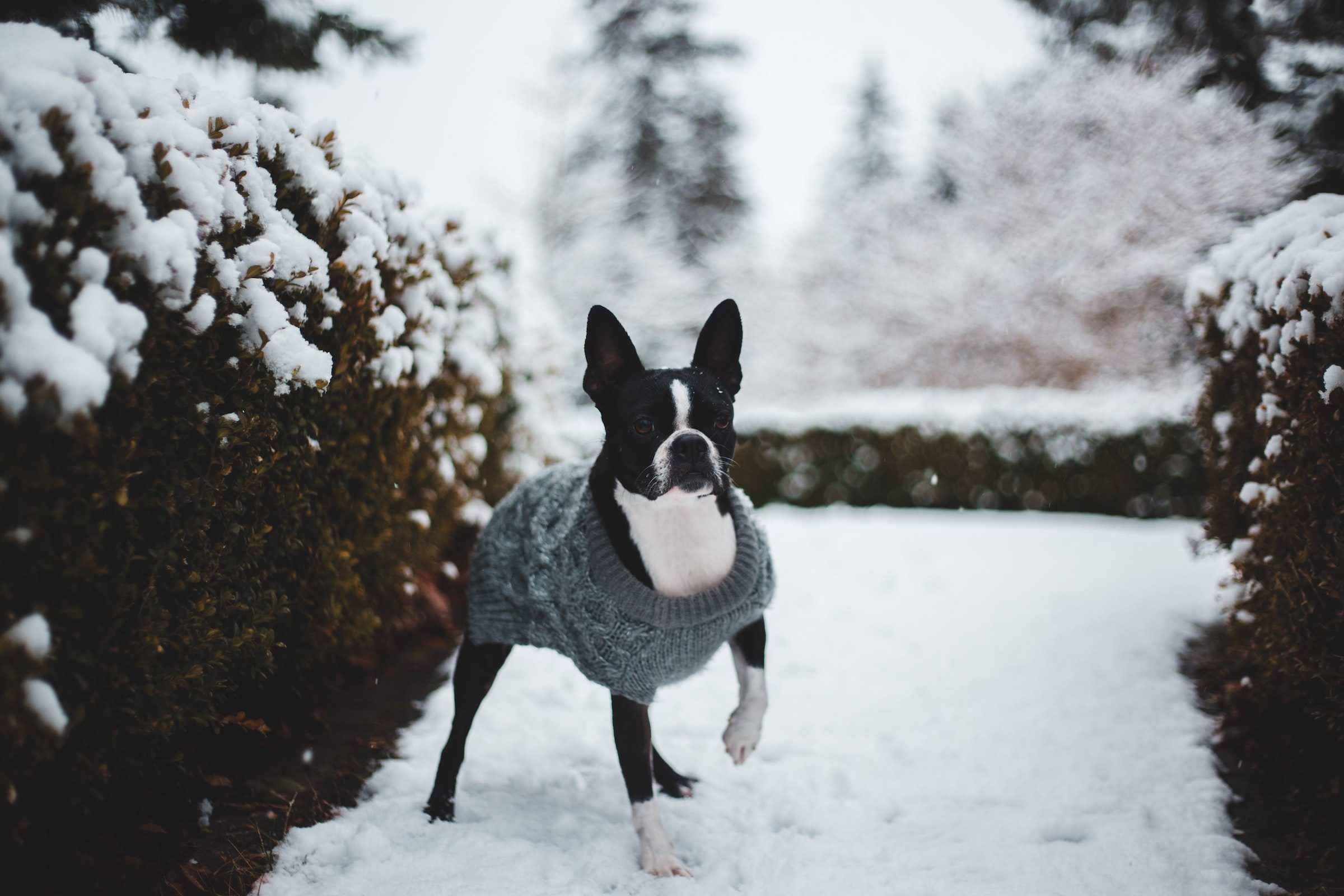
You’re not the only one who needs to bundle up when the temperatures drop. Lots of dogs are well suited for the cold weather with their thick coats and fuzzy paws. But others would rather stay inside where it’s nice and warm. Smaller dogs, short-haired dogs, some senior dogs, and dogs with illnesses like diabetes, arthritis, and circulatory problems might find it uncomfortable to venture outside when the weather turns cold.
Unfortunately, outside is where their toilet is. And when that potty is covered in ice and snow, the motivation to use it may wane significantly. You don’t like a cold seat after all, right? Does your pup hate going outside in cold weather? Here’s how to train a dog to pee outside in the cold.
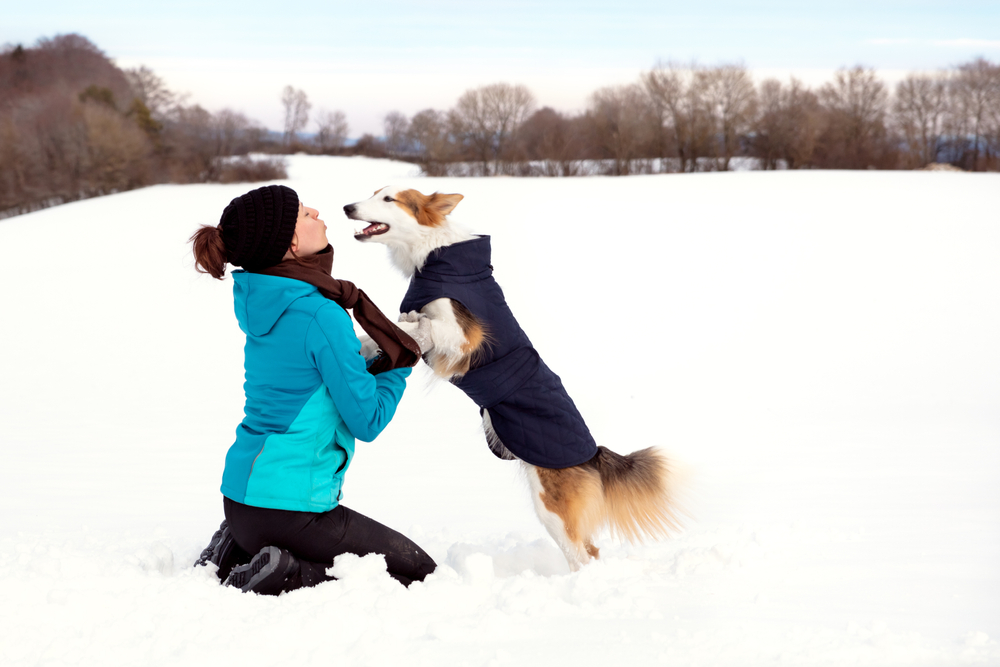
How long should you wait outside for your dog to pee?
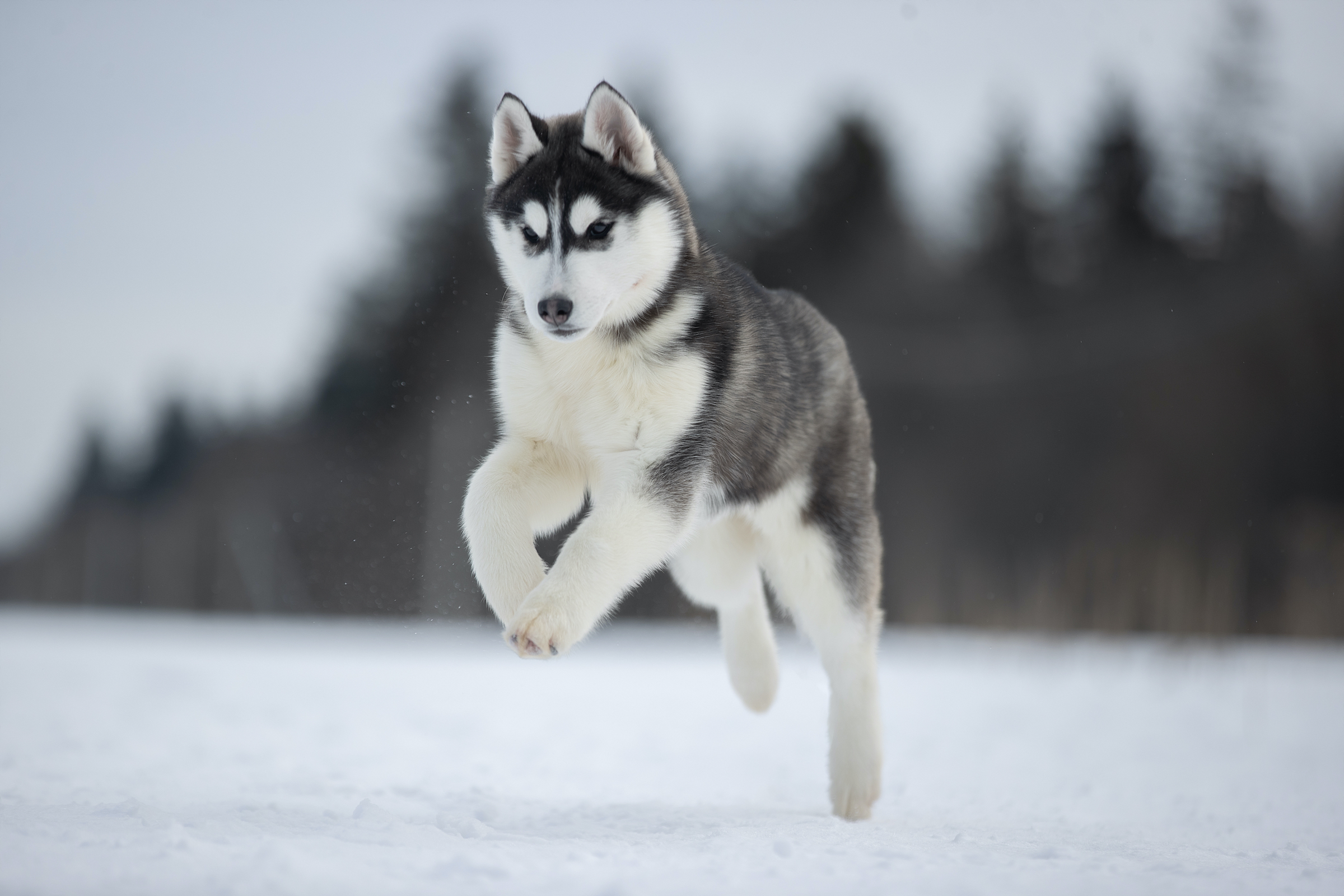
Warm him up
Besides the reluctance to go outside, you can usually tell when your dog is cold by watching his body language. A cold dog may visibly shiver, whimper, and sometimes even become lethargic and move slowly.
If your dog exhibits any of these symptoms, try making him more comfortable by purchasing a coat or sweater for him to wear when you take him outside. When shopping for your dog’s winter apparel, be sure to check the manufacturer’s size chart to obtain the right fit. When in doubt, buy the larger size. Look for a style that’s not hard to get on and off, as well as one that is washable, to make it easy on your pup and yourself.
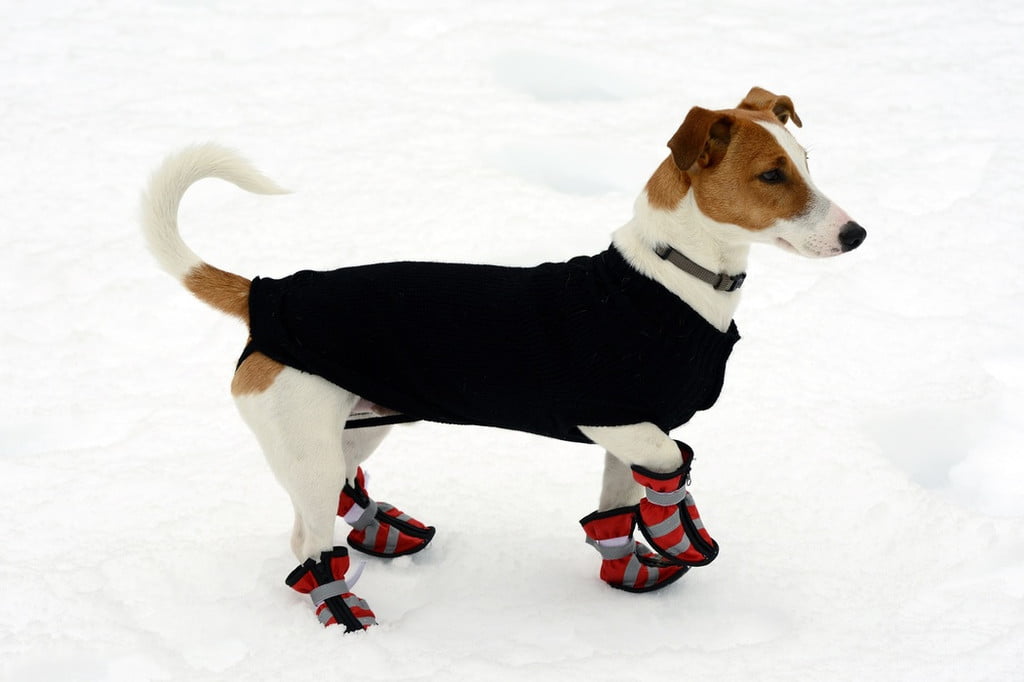
Protect his paws
In addition to a warm dog sweater or coat, you might consider investing in a set of booties. Cold and snowy weather can chap your dog’s paw pads and cause dry, itchy skin. At the very least, the sensation can make your dog feel even colder than he already is.
You can tell if the cold affects your dog’s paws by his reaction when he goes outside. If you notice that he holds his paws up or shakes them to remove the rain or snow, dog booties may be a good investment. When purchasing a set for your pup, look for a waterproof brand with good tread, flexible soles, and adjustable Velcro straps. Alternatively, try Musher’s wax, which protects his paws from ice and salt.
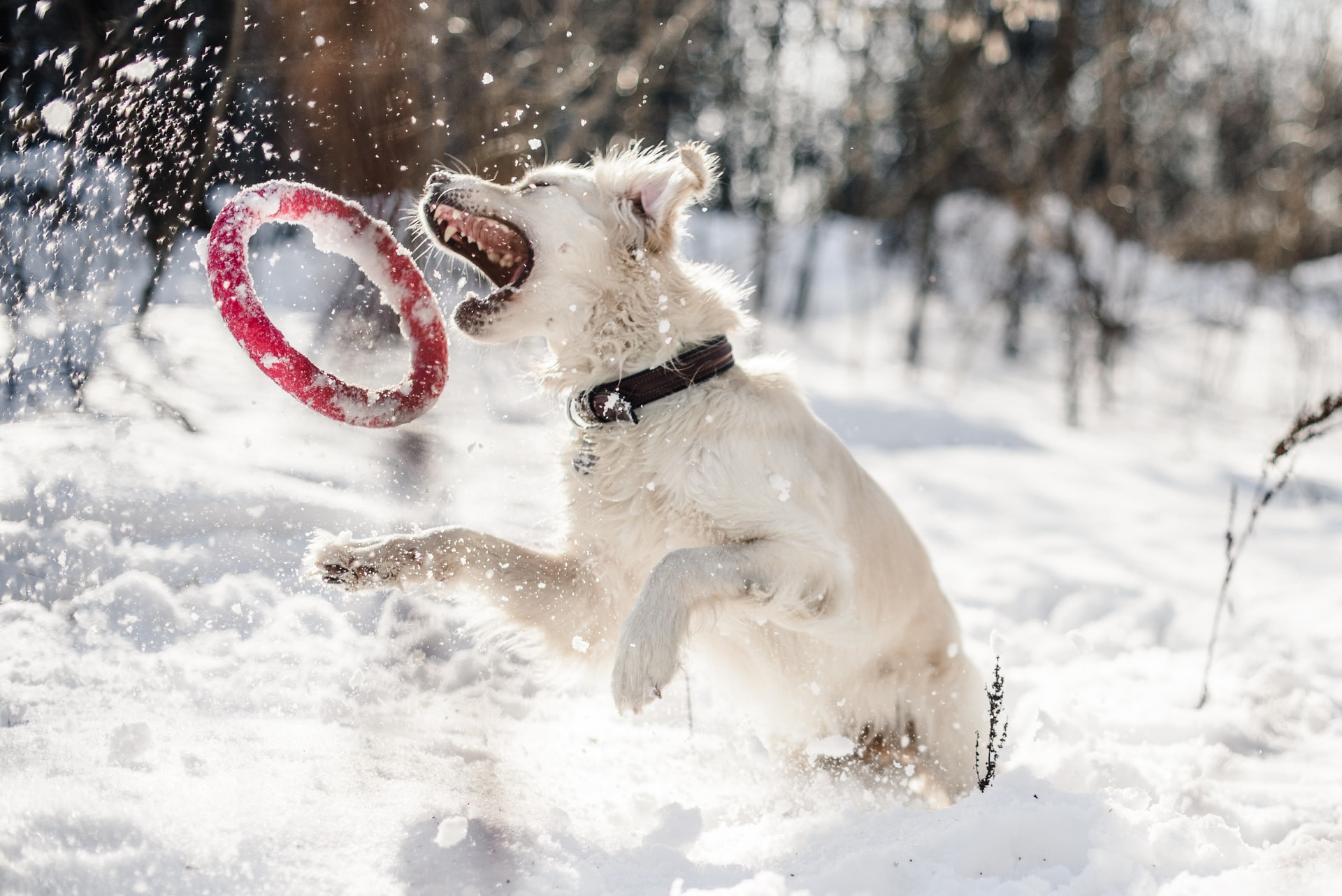
Go with him
Yes, we know it’s cold outside! But as they say, misery loves company. Remember, a dog uses his nose to find the right spot in which to relieve himself. Resolve to dress appropriately so you can stay outside for as long as it takes him to locate it. If you make the extra effort, you’ll save yourself from cleaning up any accidents your pup has indoors as a result of refusing to go by himself.
Does your dog enjoy taking a walk? If so, consider putting him on the leash even if it’s only to go out in the backyard. Although it may be too cold to take a lap around the neighborhood, the sight of the leash might make doing his business a little easier just knowing he’ll have some company while he’s out there.
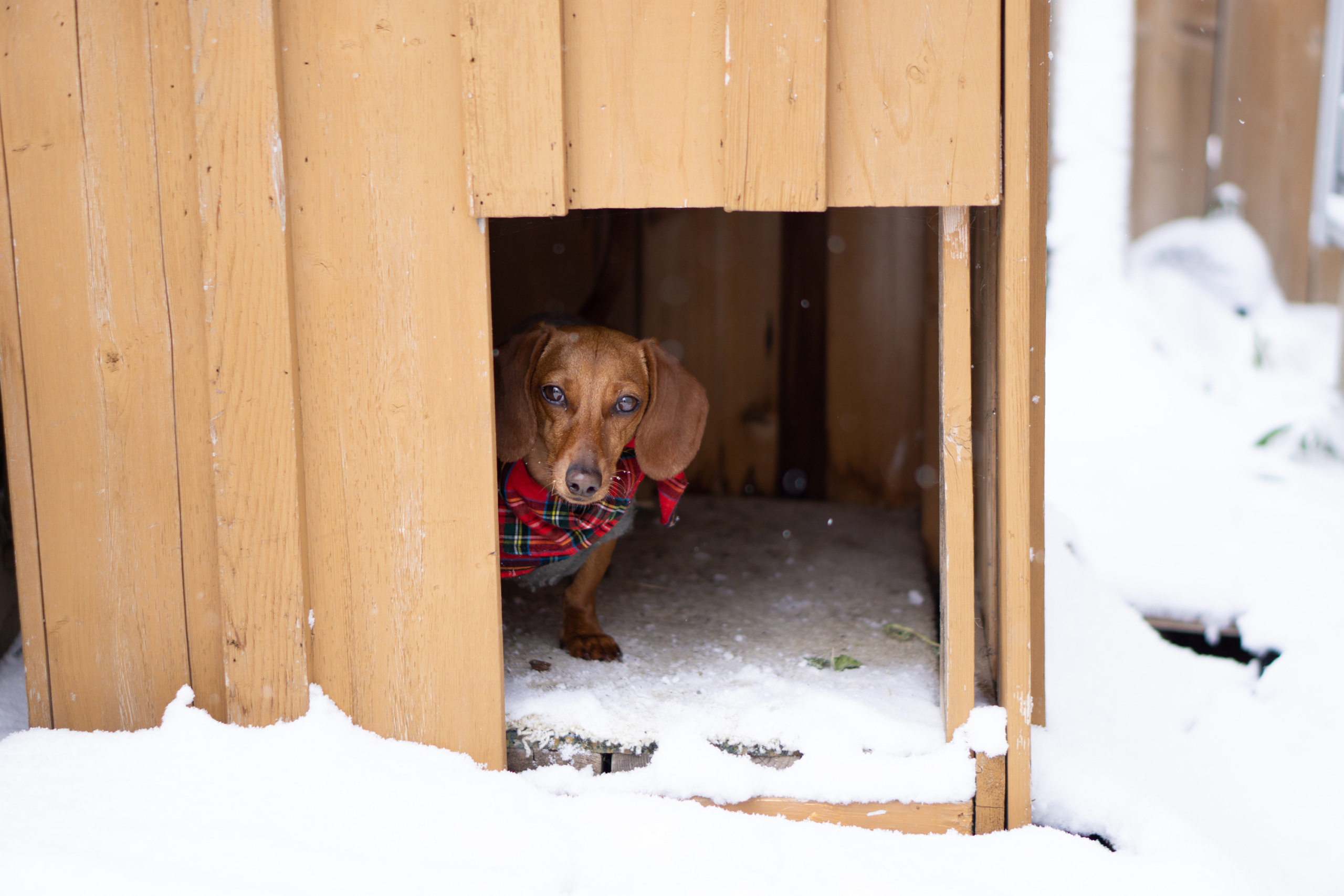
Entice him with treats
If your dog is food motivated, consider putting a few of his favorite treats in your pocket for your trips outdoors. Give him one when he walks outside and another immediately after he finishes going potty. For the record, this works only if he receives the treat the moment he’s done. That means you’ll have to stand close by, otherwise, he won’t understand the connection between going potty and receiving the treat.
And don’t forget the praise. No matter how much your dog likes treats, knowing he has pleased his favorite human is every bit as rewarding.
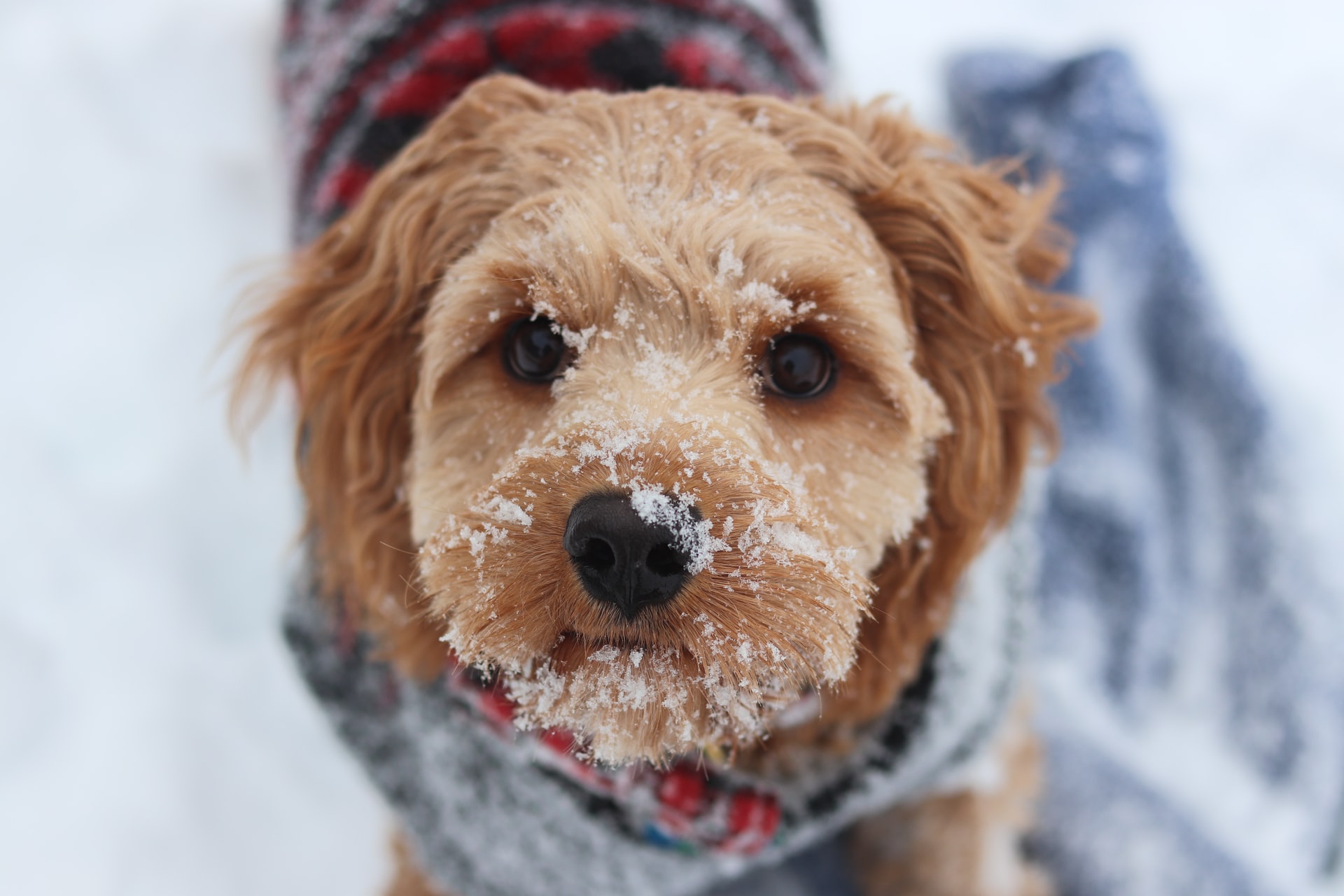
Clear a spot
Whether you have a backyard or a shared space, try to find a covered, clear spot for your dog to potty. This might mean shoveling a path through the snow and uncovering a small patch of grass or creating a wee-wee pad on the back patio with some garden timbers and pebbles or sand.
Teaching your dog to be willing to pee outside despite the temperature isn’t just a matter of good hygiene; it’s also a health issue. Dogs who hold their urine too long or who don’t empty their bladders completely when they urinate are at risk for developing a urinary tract infection, which can lead to bladder stones and kidney damage.
Your dog may never become a winter weather aficionado, but with some effort and a little positive reinforcement from his human, he will at least be willing to do his business outside in a timely fashion. Afterward, you can both cuddle up comfortably beside the fire as you dream of warmer days to come.


